
Overview
Jira, a project management and bug-tracking tool, and Salesforce, a CRM platform that gives teams a single and shared view of every customer. Both tools are the best and most popular for increasing business overall results. However, to skyrocket your business productivity and efficiency, there is a need for Jira Salesforce Integration. Such integration increases collaboration between teams for complement each other or gather the required expertise.
This guide explains how to integrate Jira and Salesforce. It can help teams work together and share information more effectively. It then gives a step-by-step guide to set up this integration, including AI-assisted integration. It also highlights some everyday use cases for it.
Do You Need Jira Salesforce Integration? Here's Why It Matters
Today’s global teams often copy and paste data manually between their tools, send emails across, or even spend time on meetings and phone calls. This leads to delays in sending data back and forth, manual data entry mistakes, misplaced or altered data, and, above all, it simply wastes time and efforts of valuable resources.
Using a tool that helps teams to share all business information seamlessly not only boost communication efficiency but also minimizes the risk of costly mistakes, allowing teams to focus on high-value tasks. This approach fosters transparency in collaboration and facilitates the automation of business processes from start to finish.
For these reasons, Jira Salesforce integration becomes an important consideration. With this integration, information flows automatically, consistently, and in real-time between teams, reaching the right individuals at the right moment.
By leveraging such integration, teams can eliminate silos, ensuring access to accurate and up-to-date information for all stakeholders involved.
Tips for Choosing a Jira–Salesforce Integration Tool
Choosing the ideal tool for a Jira-Salesforce integration isn’t just a decision it’s a strategy. It’s the foundation for seamless collaboration and sustainable growth. Nail this choice, and you’re unlocking efficiency; get it wrong, and you’re signing up for headaches.
Flexibility That Adapts
Change is inevitable—business needs evolve, priorities shift, and customer expectations grow. Today’s critical sync might be tomorrow’s redundancy, and entirely new datasets could enter the mix. A top-notch tool doesn’t just adapt to these shifts; it thrives on them. It handles complexity and custom configurations effortlessly, minimizing time and effort. Bonus points if it integrates AI for smarter, faster adaptability. After all, agility today is your competitive edge tomorrow.
Empowering Decentralized Teams
Integration shouldn’t mean compromise. A tool that respects team autonomy while enabling seamless collaboration is gold. Decentralized integration allows each side to control what’s shared and how it’s handled without constant back-and-forth approvals. It ensures critical information is secure and workflows run independently yet harmoniously. The result? A system that empowers teams without stepping on toes.
Unshakable Reliability
Downtime happens, but the way your tool handles it makes all the difference. A reliable integration solution resumes seamlessly after interruptions, requiring zero manual fixes. Consistency is non-negotiable; your teams need to trust that data will flow as promised, no matter what.
The right tool doesn’t just connect systems it builds resilience, streamlines processes, and future-proofs your operations.
Exalate: Expert Choice for Jira Salesforce Integration
Exalate is built for decentralized integration, giving teams the freedom to manage workflows independently while maintaining precise control over data flow through advanced sync rules. With features like encrypted file exchange, role-based access controls, and secure HTTPS protocols, it offers robust security tailored to modern needs. Its ISO 27001 certification further underscores its commitment to safeguarding information.
How to Set Up a Jira Salesforce Integration
We’ll get to the step-by-step integration process by installing Exalate on both Jira and Salesforce, turning fragmented systems into something more elegant.
After that, you can start synchronizing Salesforce records with Jira issues.
If and when needed, you can configure and control what information is shared between them.
We will look at all the steps in detail. So let’s get started.
Step 1: Install Exalate on Salesforce
To install Exalate on Salesforce, you can request a free trial, get assistance from a dedicated team of experts at VALiNTRY360, or directly install the app from the AppExchange marketplace.
First, choose the environment to install Exalate: Production or Sandbox. Read the terms and conditions, accept them, and click “Confirm and Install.”

Alt text-> Install Exalate on Salesforce for Jira Salesforce Integration
After that, you will be taken to an important screen where you can select the users who will have access to the Exalate app.
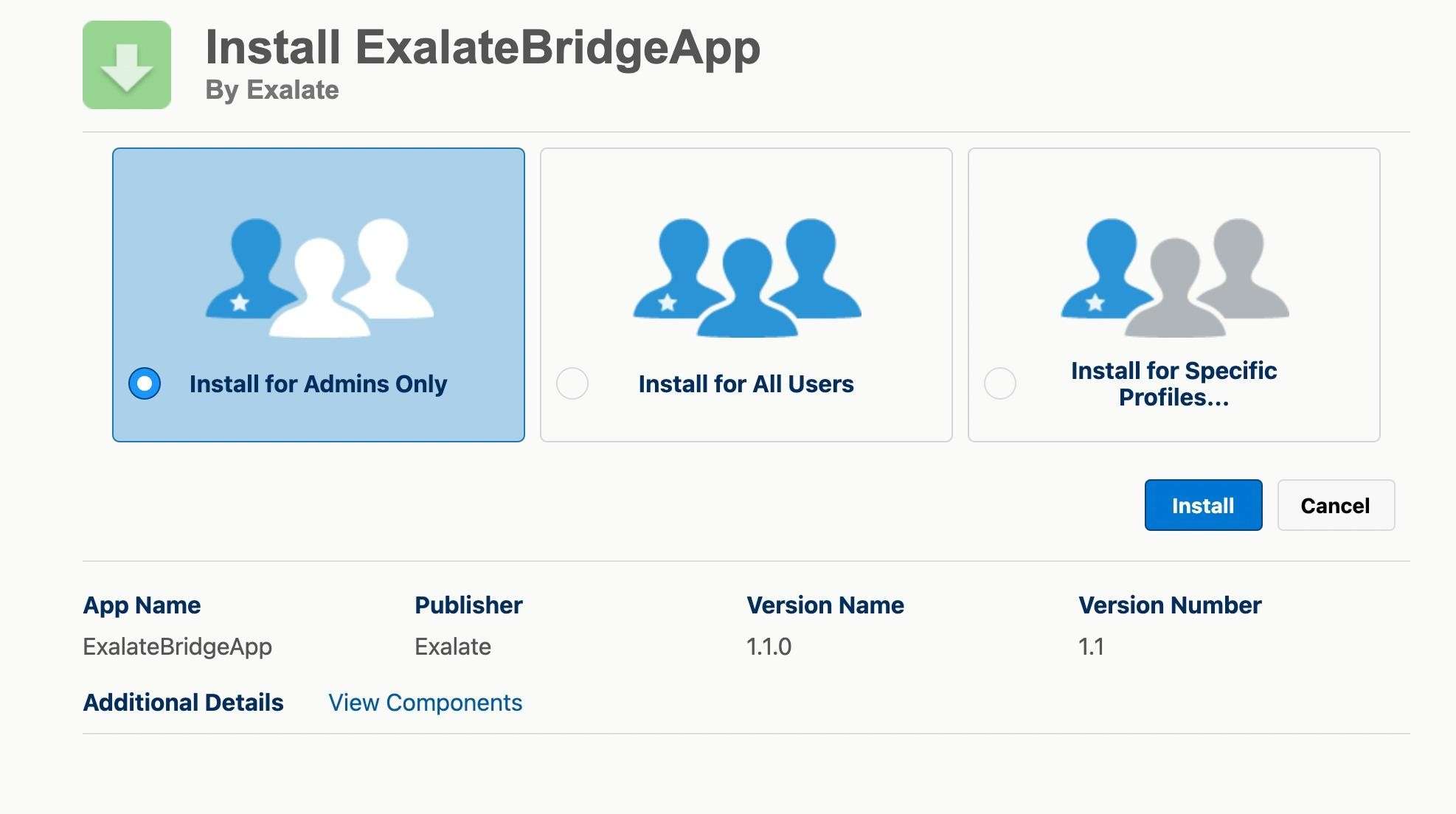
Alt text-> Installing Exalate on Salesforce for Jira Salesforce Integration
On the next screen, you need to grant access to third-party websites.
Click “Continue” to proceed.
That’s it! You’ve successfully installed Exalate on Salesforce.
Step 2: Install Exalate on Jira
Installing Exalate is pretty simple. We assume you are using Jira Cloud. You can either find Exalate by searching for “Exalate Jira Issue Sync, AI-assisted integration & more” on the Atlassian marketplace or request a free trial.
To install Exalate, click on the “Settings” icon located in the top right corner of your Jira instance. From the drop-down menu, select “Apps.”
In the search box, type “Exalate” and press Enter. Then, select “Exalate Jira Issue Sync & more” from the results.

Alt text-> Install Exalate on Jira for Jira Salesforce Integration
Click “Try it free”.
After a moment, click the “Get Started” button. You are now ready to begin your first connection.
Step 3: Connect Jira to Salesforce
We will initiate the connection from Salesforce, but you can also start from either side. Exalate provides a consistent interface across all platforms, so you don’t need to worry about where to begin.
The first step after installing Exalate is to initiate a connection on one side and accept it on the other side.
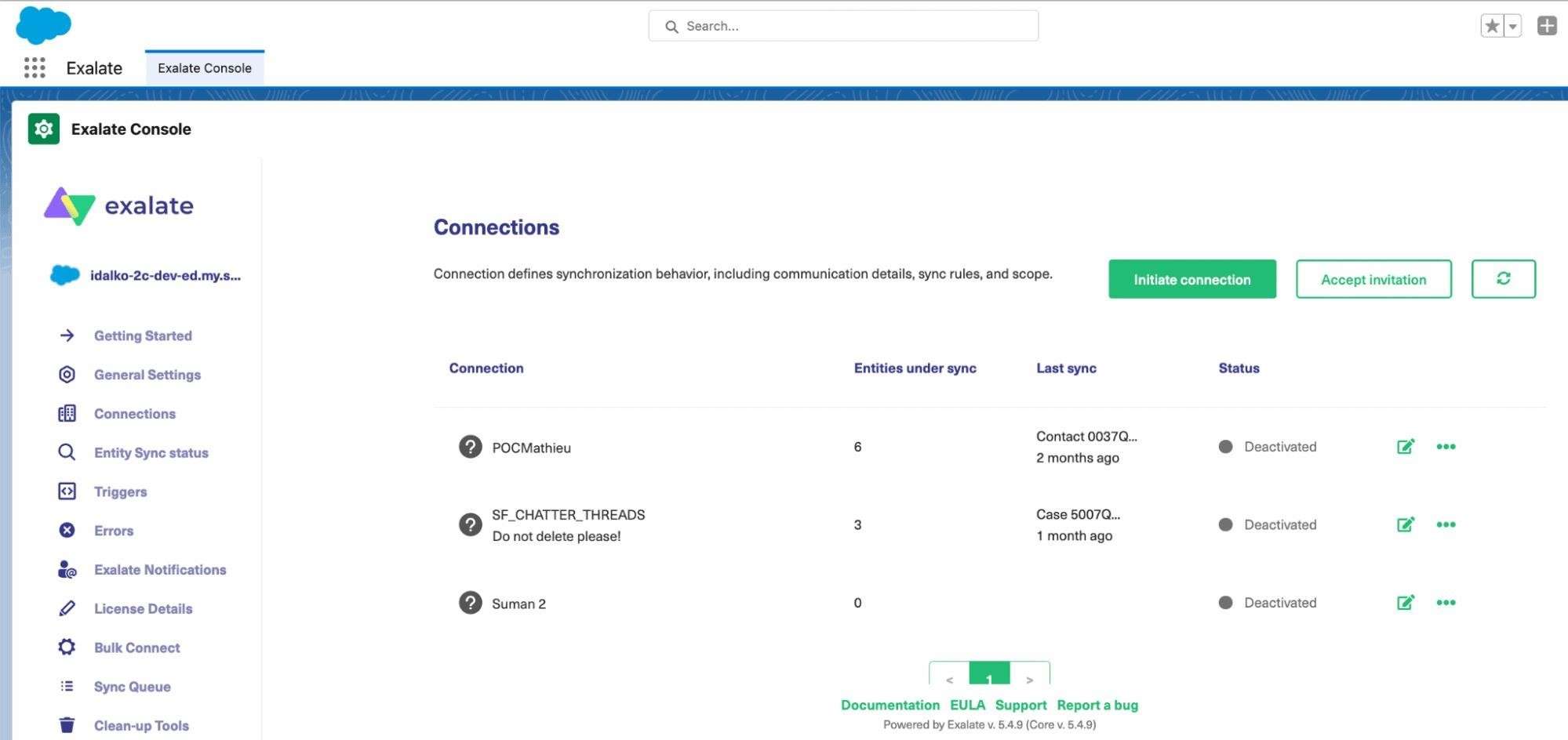
Alt text-> Integrating Jira and Salesforce
If this is your first time, start by clicking the “Initiate Connection” button. The next screen will prompt you to enter the destination instance URL.
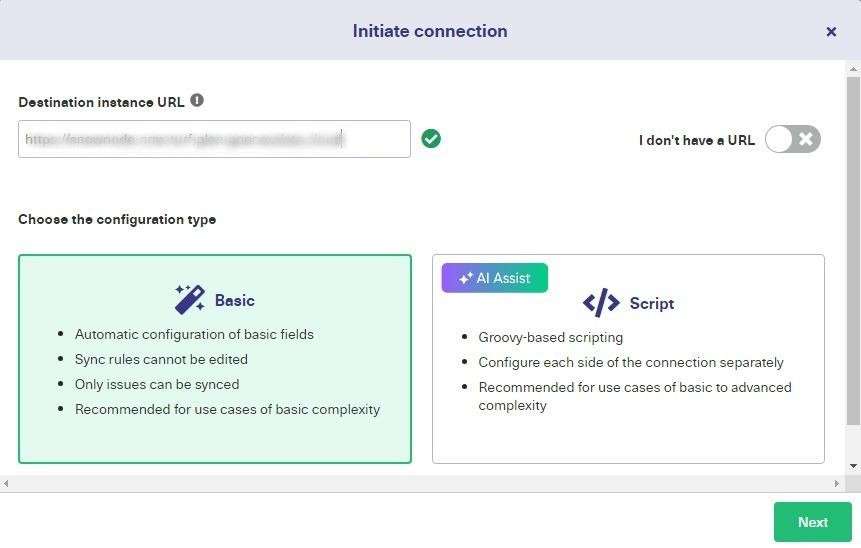
Alt text-> Destination instance URL
The goal is to determine if Exalate is installed on the other side.
We enter the URL of the Jira instance since we are initiating the connection from Salesforce. After a quick check, you will now need to choose the connection mode.
Exalate for Salesforce comes in 2 modes: Basic and Script.
- Basic: The Basic mode provides a user-friendly, low-code interface ideal for simple synchronization tasks. This mode includes predefined mappings and configurations that cannot be modified.
But we recommend you continue with the AI-Assisted Script Mode
- Script: The Script mode provides you with a lot more customization capabilities to accommodate even the most complex and advanced use cases.
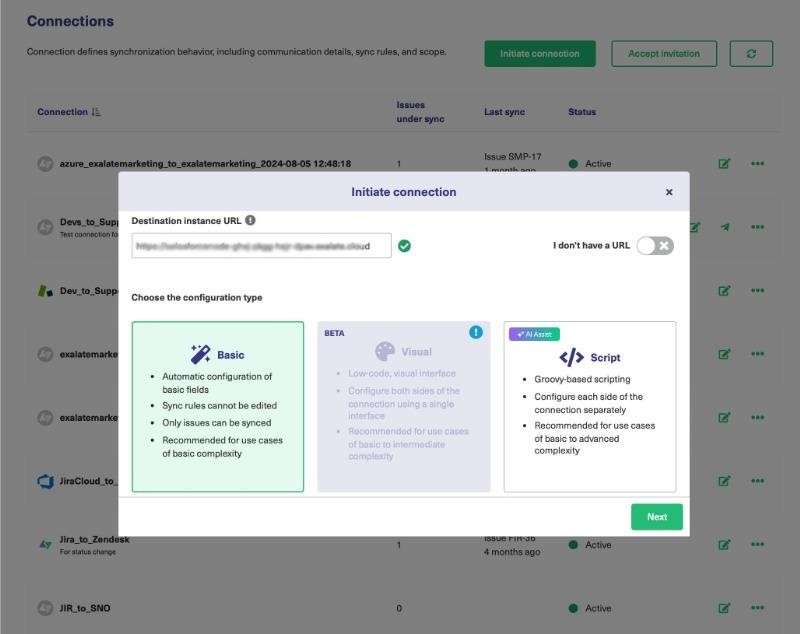
Alt text-> Initiate connection- basic and script
Once you enter the instance names, a connection name will automatically be generated for you, but you can change it if you want.
Once done, hit “Initiate”.
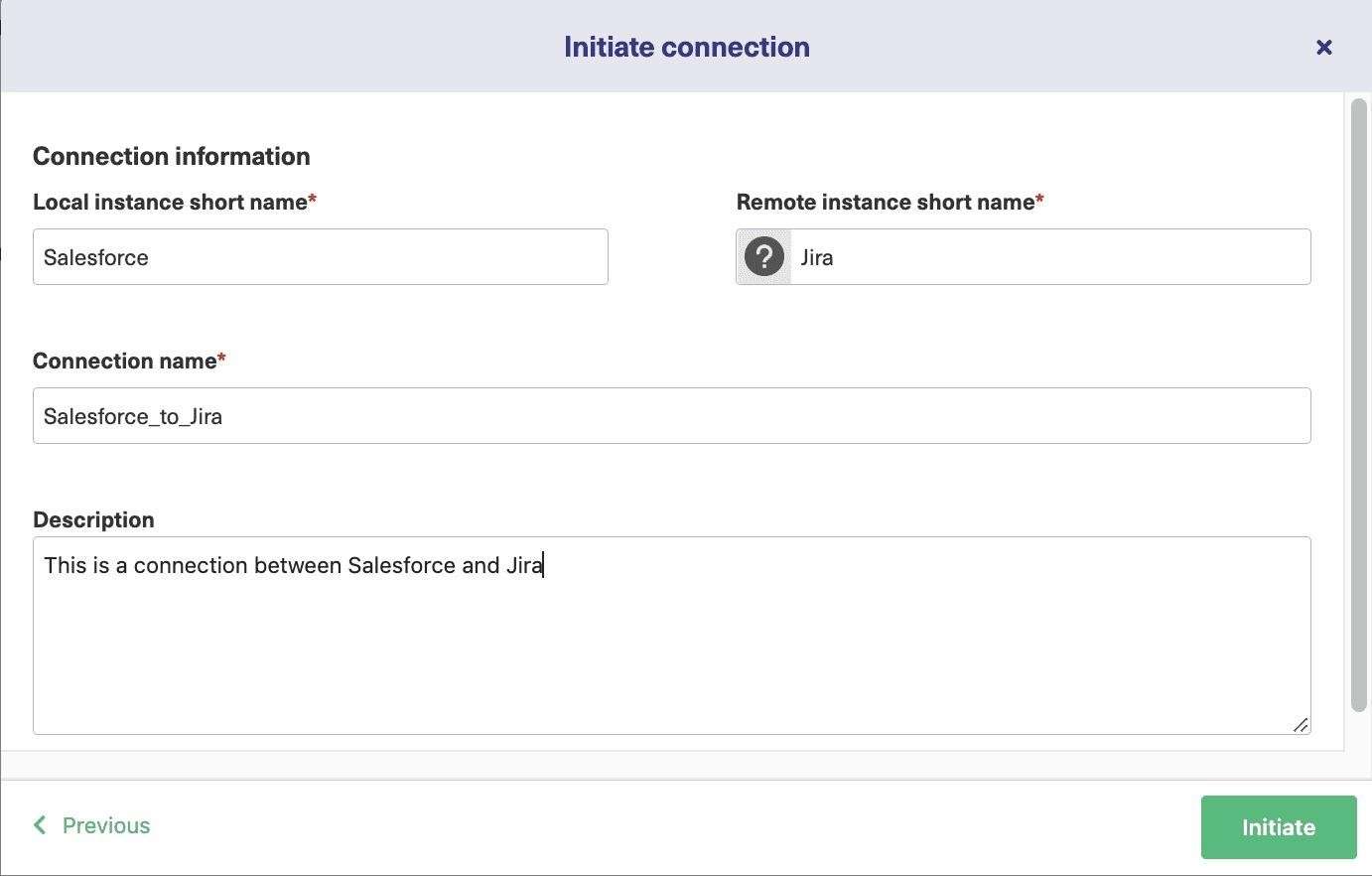
Alt text-> Initiate connection
Exalate has generated an invitation code for you. Click on “Copy Invitation Code” to copy it and save it in a secure location.
Your work on the Salesforce side is now complete.
Next, open the “Connections” tab in the Exalate Admin console on the Jira side.
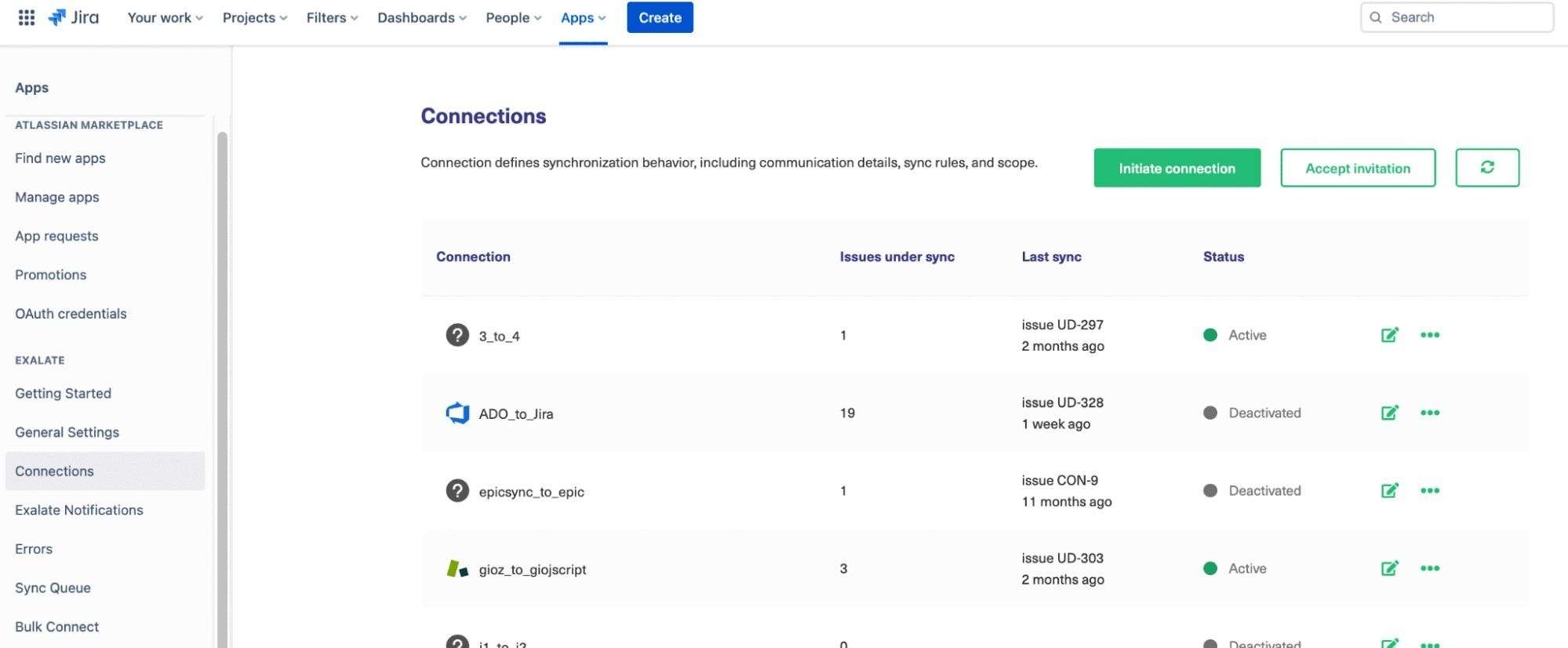
Alt text-> Connections
On the “Connections” screen click “Accept the Invitation”.
Paste the invitation code. Then click “Next”.
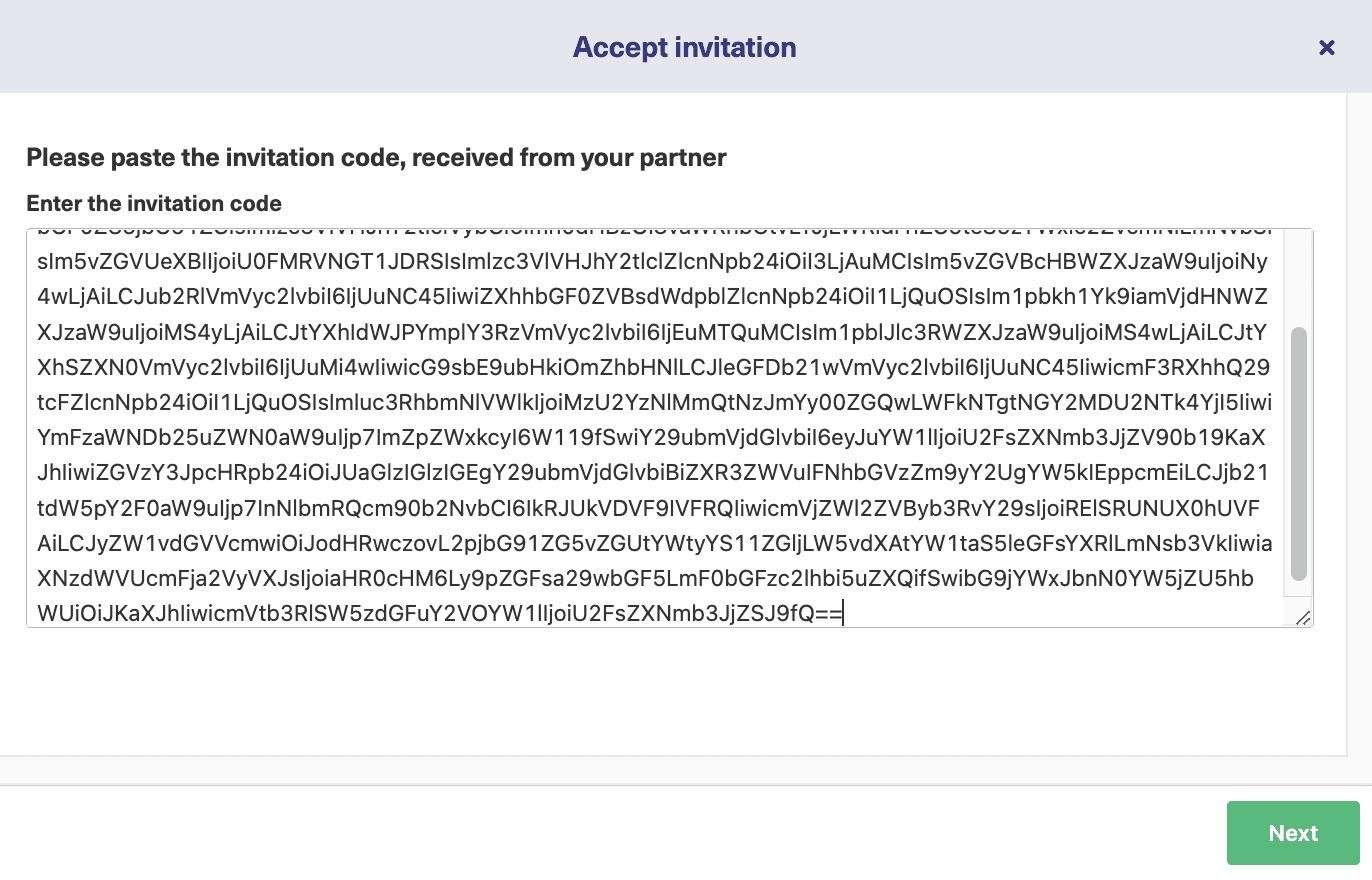
Alt text-> Paste the invitation code
Now, select the project on the Jira side and select the appropriate one. Click “Confirm”.
Congratulations! The connection between Jira and Salesforce has now been successfully established.
Next, proceed to configure the connection by clicking the “Configure Sync” button below.
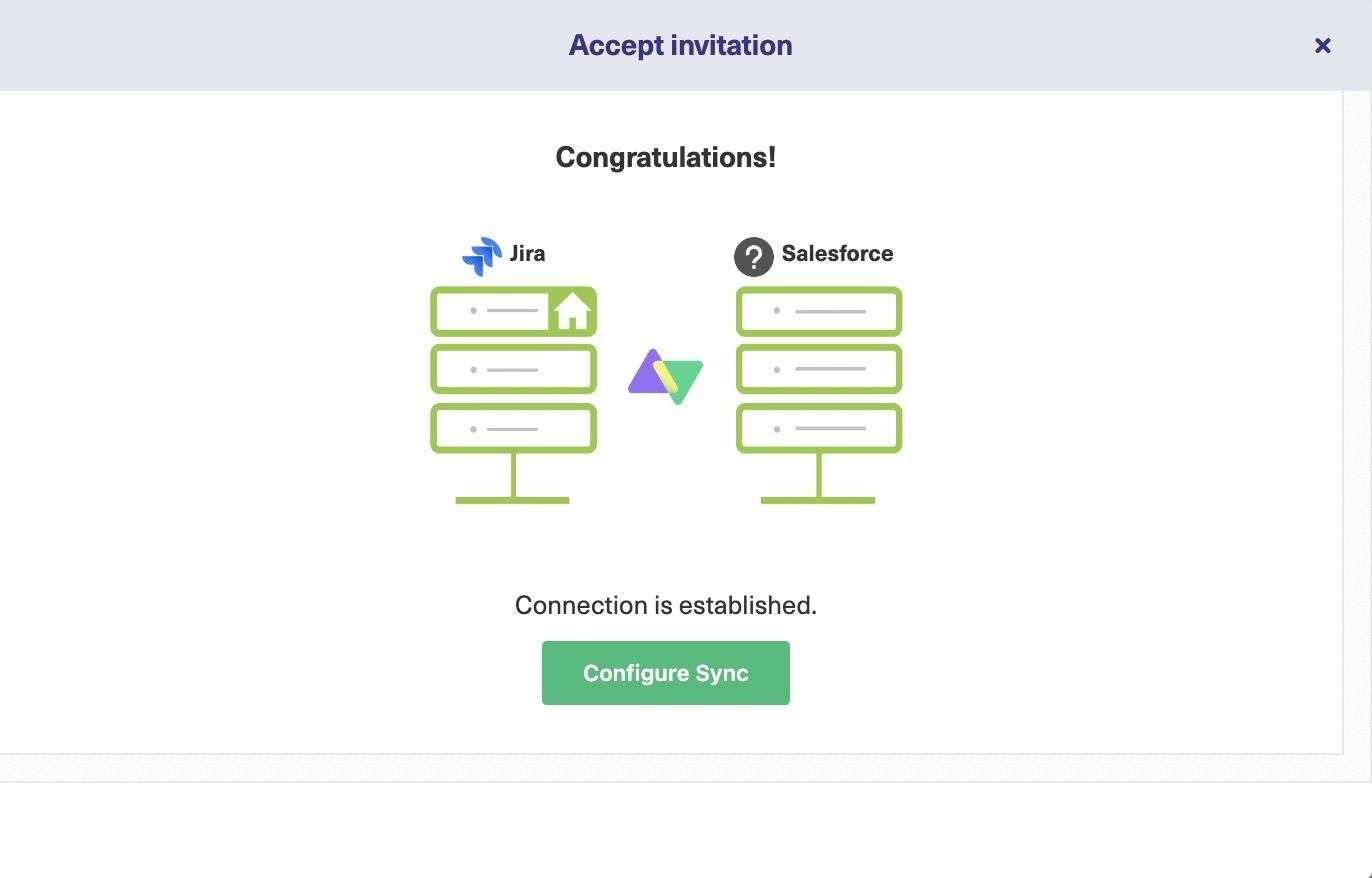
Alt text-> Accept invitaion
If you want to simplify your workload, you can utilize Exalate’s AI Assist. Just use the chat window found in both the incoming and outgoing sync rules tabs. Type your synchronization requirements into the chat, and AI Assist will generate the scripts for you.
Note: AI Assist, like any other AI, can make mistakes. So, try to be as precise and detailed as possible with your prompts.
Conclusion
Integrating information between two powerful tools- Jira and Salesforce improves collaboration and communication within teams. It also promotes data transparency across teams, ensuring that everyone remains informed and aligned.
We explored the implementation of a Jira Salesforce integration in 3 steps: setting up Exalate on both sides and connecting them afterward.
We selected Exalate for this integration due to its inherent support for a distributed architecture and its advanced scripting capabilities.
Related Posts
Align Marketing & Sales Engagement to Accelerate Pipeline…
In 2025, Sales Engagement is less about sending more messages and more about orchestrating the right conversations with the right buying group at the right moment. B2B cycles are longer, stakeholders are many, and channels are fragmented. The teams that…
Onboard Reps into Salesforce Sales Engagement in Just…
Getting Sales Engagement live in a week is realistic when you cut scope to what creates meetings, standardize how reps work, and coach managers on the new rhythm. Teams often stumble on the same pitfalls: contact data that is not…
Sales Engagement: Call Outcomes, Tasks & Dashboards That…
Your sales team’s effectiveness hinges not just on effort—but on structure, visibility, and follow-through. Too many organisations experience missed follow-ups, inconsistent call logging, and opaque pipeline health. That’s why getting Sales Engagement right matters.With a solid approach to sales engagement—especially…

